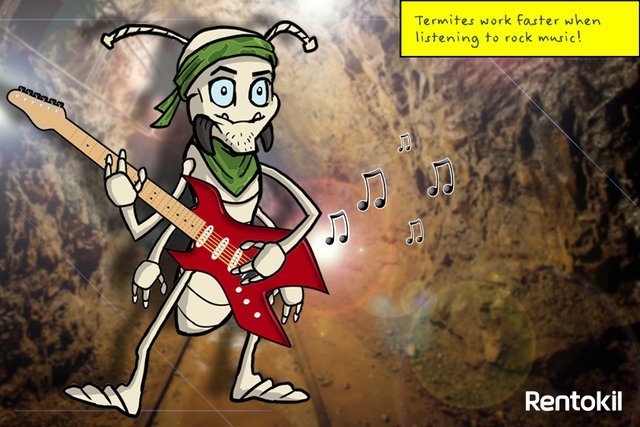STUDY OF TERMITES part 1
.jpg)
Source: www.pinterest.com
.jpg)
Source: www.pinterest.com
Take a moment to imagine yourself eating your best food. Hmm!! Yummy. Now imagine living in an house of food; your best food.
While the picture seem inconceivable to some of us, to the termite, it's not.
Termites ( known as white ants), are a group of eusocial insects usually classified at the taxonomic rank of order, Isoptera
The infraorder name Isoptera is gotten from the Greek words 'iso' which means equal and 'ptera' (winged), which is associated to the nearly equal size of their fore and hind wings.
Termites are usually small in size, measuring between 4 to 15 millimetres (0.16 to 0.59 inches) in length. The largest of all termites are the queens of the species, Macrotermes bellicosus, measuring up to over 10 centimetres (4 inches) in length.
Most known worker and soldier termites are completely blind as they do not have a pair of eyes. However, some species, such as 'Hodotermes mossambicus', have compound eyes which they use for orientation, dirction and to differntiate sunlight from moonlight.
Depending on their feeding habits, termites are classified in two groups: the lower termites and higher termites. The lower termites predominately feed on wood. As wood is difficult to digest, termites prefer to consume fungus-infected wood because it is light, easier to digest and the fungi are high in protein. Meanwhile, the higher termites consume a wide variety of materials, including faeces, humus, grass, leaves and roots. The gut in the lower termites hosts many species of bacteria plus protozoa, while the higher termites only have a few species of bacteria with no protozoa.
Because of their cellulose-eating habits, termites sometimes do great damage to buildings and wooden structures. Once termites have entered a building they do not limit themselves just to wood, they also damage paper, cloth, carpets, and other cellulosic materials.
.jpg)
Source: pixabay.com
And a fact unknown to many is that termites eat through a house twice as much as they usually do when rock music is played. I guess they get high spirited when their favourite artistes are being played..

Source: www.rentokil.co.za
SIGNS OF TERMITES INFESTATION
- WINGS
one common sign of termites is their discarded wings. Flying termites lose their wings shortly after finding a mate. They follow the newly found bride to create a colony of their own where they become king. It's one reason king termites do not have wings.
- Papery or hollow sounding timber
Termites are adept at consuming wood from inside out, leaving a thin veneer of timber or just the paint. When you knock or tap on an area that is subjected to termite damage, it will sound hollow or papery. This is because part or all of the timber inside has been eaten away.
3.Tight fitting doors and hard-to-open windows
Although not the main cause, stiff windows and warped doors can mean termites! The moisture they produce when eating and tunneling through door and window frames causes the wood to warp, making it quite difficult to open doors and windows.
- Frass – Termite Droppings
A key sign of termites, and in particular drywood termites, is frass – termite poop. This indocates an attack or infestation. Unlike some other species of termites, the drywood termites don’t use their faeces to build their tunnels. Instead they push their poo out of small holes near the entrances to their nest. This results in small black marks and a dark powdery substance in and around the area in which they are infesting.
REMEDIES FOR TERMITES INFESTATION
1.Expose Termites to Sunlight
Termites are extremely susceptible to sunlight and die off quickly when exposed to the sun’s harsh ultraviolet (UV) rays. Exposing them to sunlight is an awesome method for eliminating termites from a piece of furniture or other items that can be carried. For objects that cannot be carried, it might not prove a workable method.
.jpg)
Source: www.vkool.com
- The wet cardboard trap
If you have some corrugated boxes in your garage or storage closet, then you’ve got the perfect trap for the termite. Wet the cardboard down and put it near where you suspect a termite colony. Once you see the pests feeding off of the cellulose in the box, you can remove it and burn it.
.jpg)
Source: www.fabhow.com
- Using orange oil
- Using vinegar
- Introducing nematodes
REFERENCES